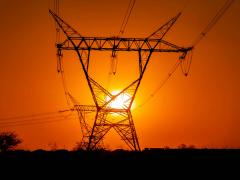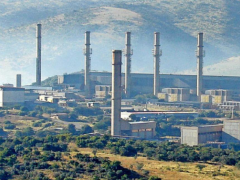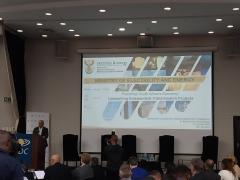Municipal debt owed to Eskom surged from R28 billion in 2020 to R105 billion by September 2025 with just 14 municipalities responsible for 58% (around R60,9 billion) of the total debt. Their average payment level is 31%, which is far below Eskom’s overall collection rate of 94%. While payments by non-municipal customers is 99,8%, municipalities collectively achieve only 87,9%.
To stabilise this crisis, National Treasury and Eskom launched the Municipal Debt Relief Programme on April 1, 2023, granting 71 municipalities access to conditional debt write-offs. But 61 of these municipalities have failed to meet the conditions and their collective arrears have increased by R27,57 billion since joining the programme.
Briefing the Portfolio Committee on Electricity and Energy during a joint Eskom/Department of Electricity and Energy session on the state of the municipal electricity distribution industry on November 21, Eskom’s Acting Group Executive for Distribution, Agnes Mlambo, outlined the severity of the situation. She noted that municipal debt has become so entrenched that Eskom is unable to set a date for the unbundling of its Distribution division.
“Eskom has come to a point where the best solution now is the distribution agency agreement (DAA), recently approved by Cabinet,” she said.
Under the DAA model, a municipality’s electricity business is fully ring-fenced. Eskom assumes responsibility for billing, revenue collection and tariff administration while capital investment remains funded by the municipality. Eskom also distributes free basic electricity directly to indigent households to ensure the grants reach their intended recipients.
Eskom has prioritised the 14 most indebted municipalities for DAA onboarding with targeted write-offs of R62,6 billion linked to compliance. To date, only two municipalities – Emfuleni and Maluti-a-Phofung (MaP) – have signed DAAs (both under court order). Merafong City Local Municipality recently became the first to sign voluntarily. Its overdue debt has grown by 74% between September 2024 and September 2025, illustrating the urgency of intervention.
The experience at MaP shows the benefits and the limits of the DAA. When MaP signed in May 2023, payment levels were around 17-18%. These improved to 40% by October 2024 after interest reversals tied to debt relief and a reduction in notified maximum demand. By March 2025, however, payment levels had fallen back to 25% and have remained between 24-25% since. Eskom attributes the drop to incorrect billing, time-of-use mismatches in winter tariffs and rising prepaid consumption for which vendors have failed to remit revenue.
Resistance to the DAA remains widespread. In several municipalities, officials have discouraged residents from paying Eskom directly or withheld funds owed to Eskom.
Mlambo stressed that the purpose of the DAA is to improve revenue collection, halt the accumulation of new debt, restore sustainable service delivery and rebuild institutional capacity. “Most municipal debt is a result of weak collections, excessive electricity and water losses due primarily to lack of maintenance and inadequate credit control,” she said. “Without proper capacitation, municipalities are unable to offer the service required: customers are not billed correctly, the network is not maintained and security of supply is compromised.”
Eskom CEO Dan Marokane described the DAA as a five-year interim measure to strengthen operational capacity, enabling municipalities to eventually run their electricity businesses effectively and meet their payment obligations. “The difference between well-performing municipalities and chronic defaulters is skills,” he said. “If you’re running a business of this nature without the appropriate level of electrical engineering resources, you’re asking for trouble.”
Eskom has proposed that National Treasury should make DAAs mandatory for all defaulting municipalities or shift unsustainable municipalities onto prepaid or credit-limited electricity supply agreements.













